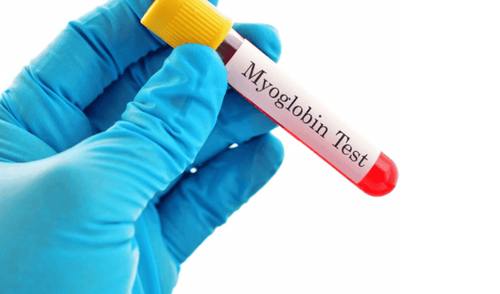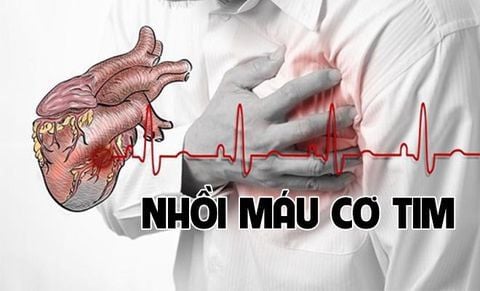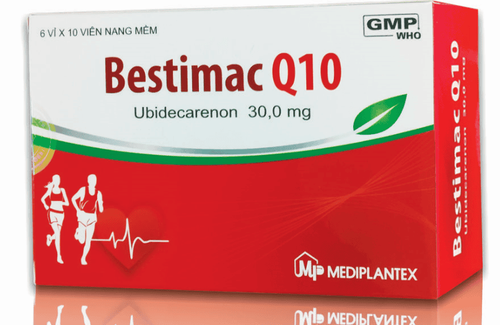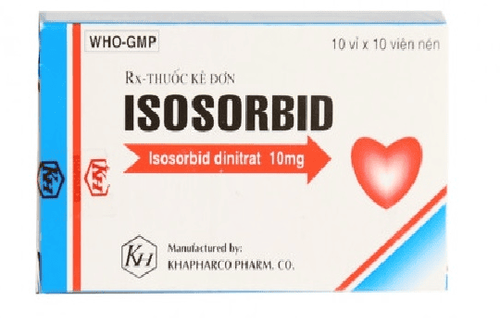This is an automatically translated article.
Cardiac markers are very valuable for the diagnosis of myocardial infarction. Cardiac imaging in the emergency room also helps to distinguish it from other myocardial injuries. The following article will mention cardiac markers used in emergency for diagnosis and prognosis.
1. What are cardiac markers?
Cardiac markers are biological products released from damaged myocardium. Depending on the characteristics of myocardial damage and half-life, each cardiac marker has its own applications in screening, diagnosis or prognosis.
An ideal cardiac marker should be specific for heart disease, have a high sensitivity, be able to distinguish irreversible or reversible damage and detect re-infarction, recurrent infarction, and be of a nature Stable, fast measurement at low cost. In addition, these cardiac markers in the emergency room also have the ability to estimate the size of the myocardial infarction area, predict the disease and monitor the effectiveness of treatment
Clinically, cardiac markers are an important indicator in Diagnosis and prognosis of acute coronary syndromes. Because not every case can be easily diagnosed by symptoms and electrocardiogram. Especially in patients who are sometimes asymptomatic, such as the elderly or diabetics. Cardiac markers in the emergency room to diagnose acute coronary syndromes are divided into two categories: Enzymatic and non-enzymatic. Enzyme markers include creatine kinase (CK), lactate dehydrogenase (LDH), and aspartate aminotransferase (AST). Non-enzymatic cardiac markers include Myoglobin, Troponin T, and Troponin I. In fact, all cardiac markers have their own value and application in emergency situations, and no cardiac marker is absolutely ideal. But cardiac troponin is the most important marker for the diagnosis of acute myocardial infarction because it has the highest sensitivity and specificity.

Các dấu ấn tim rất có giá trị đối với chẩn đoán nhồi máu cơ tim
2. Cardiac markers in emergency
Cardiac markers used clinically in the diagnosis and prognosis of acute coronary syndromes include: Myoglobin, CK-MB, Troponin (hsTnT and hsTnI) and H-FABP, BNP.
Troponins Troponins include Troponin T, Troponin I and Troponin C. These are regulatory proteins found in both cardiac and skeletal muscle, controlling calcium-mediated interaction between actin and myosin filaments. Troponin I (TnI) and Troponin T (TnT) are abundant in the myocardium. TnT and TnI are released into the blood when heart cells are damaged, so they become cardiac markers to detect myocardial damage in the emergency room. In acute coronary syndromes, troponin increases within 4 hours of symptom onset and persists for 7-10 days thereafter. Changes in cardiac troponin levels between measurements are more important than single-measurement values, helping to differentiate myocardial infarction from other causes of elevated troponin. Causes of elevated troponin not due to acute myocardial infarction such as: renal failure, myocarditis, pericarditis, pulmonary embolism, heart failure, septic shock.
Myoglobin Myoglobin is an iron-binding protein with oxygen found in muscle tissue, mainly in the heart and skeletal muscle. Myoglobin is rapidly released in the presence of myocardial injury, making it an important emergency cardiac marker for early diagnosis of acute myocardial infarction. Since skeletal muscle also contains myoglobin, it is not cardiac-specific. Therefore, for the early diagnosis of myocardial infarction, myoglobin is often combined with or replaced by troponin T or troponin I. Myoglobin rises within 2-4 hours after the onset of myocardial infarction, peaking after 6-12 hours and returns to normal after 24-36 hours. CK or CK-MB Creatine kinase (CK) is an enzyme that plays a role in muscle contraction, consisting of 2 subunits, M and B, that combine to form 3 isoenzymes, CK-BB (found mainly in the brain). , CK-MB (available in heart) and CK-MM (found in muscle and heart). When myocardial necrosis releases CK-MB into the bloodstream, which should be considered as a marker for myocardial injury. CK-MB increases within 4-6 hours of symptom onset, peaks after 24 hours, and returns to normal within 48-72 hours. The value of CK-MB in the diagnosis of late myocardial infarction after 72 h is limited but helps in the diagnosis of re-infarction if levels rise again after returning to normal. However, CK-MB is not 100% specific for the heart and can be elevated in acute muscle injury, myositis, polymyositis, and chronic inflammation.
H-FABP (heart-type fatty acid-binding protein) H-FABP is a low-molecular-weight protein that binds heart-type fatty acids. Predominantly present in cardiac muscle and to a lesser extent in skeletal muscle. The release of H-FABP in the presence of myocardial damage should make it a cardiac marker in the emergency of myocardial infarction, especially in patients without troponin elevation or NT-Pro BNP.
BNP and NT – Pro BNP Type B Diuretic Peptide (BNP) is a hormone secreted by cardiomyocytes in the ventricles in response to cardiac stress and ventricular dysfunction. BNP helps differentiate between cardiac and extracardiac causes of acute dyspnea. Several studies have demonstrated the prognostic value of BNP and NT-proBNP in patients with myocardial infarction. Plasma NT-proBNP, measured 2 to 4 days after acute MI, independently predicts left ventricular function and 1-year survival.

BNP và NT – Pro BNP trong cấp cứu giúp chẩn đoán và tiên lượng hội chứng mạch vành cấp
CRP CRP is a protein made by the liver when there is tissue damage, infection, or inflammation. CRP is a useful prognostic indicator in patients with acute coronary syndromes, as elevated CRP levels are independent predictors of cardiac death, acute myocardial infarction, and congestive heart failure. Patients with high CRP at admission have a poor first-year prognosis; high chance of recurrence. However, CRP is a less specific and sensitive biomarker for cardiac injury compared with hs-cTn.
Myeloperoxidase (MPO) MPO is an enzyme present in white blood cells that makes plaque unstable and causes blood vessel constriction. MPO may be an early cardiac marker and is useful in the emergency department, but more studies are needed to determine sensitivity, specificity, and predictive value.
Ischemic-modified albumin (IMA) IMA is serum albumin produced upon contact with ischemic myocardial tissue. IMA increases a few minutes after the onset of ischemia, peaks within 6 hours, and increases persist for up to 12 hours. However, IMA is also increased in patients with cirrhosis, infection, and advanced cancer. Therefore, more research is needed on the role of IMA in myocardial infarction.
In summary, cardiac markers are considered the cornerstone in the diagnosis of acute coronary syndromes. Different cardiac markers are used in emergency situations such as AST, myoglobin, CRP, CK -MB, troponin... but the most widely used are still troponin and CK - MB. Elevated levels of cardiac markers in the emergency room may be indicative of ischemic myocardial necrosis or other conditions causing myocardial damage. Knowing the kinetics of cardiac markers as well as the clinical picture is essential to accurately diagnose the cause of these elevated markers.
Vinmec International General Hospital is one of the hospitals that not only ensures professional quality with a team of leading medical doctors, modern equipment and technology, but also stands out for its examination and consultation services. comprehensive and professional medical consultation and treatment; civilized, polite, safe and sterile medical examination and treatment space.
Please dial HOTLINE for more information or register for an appointment HERE. Download MyVinmec app to make appointments faster and to manage your bookings easily.
Reference source: medlatec.vn













